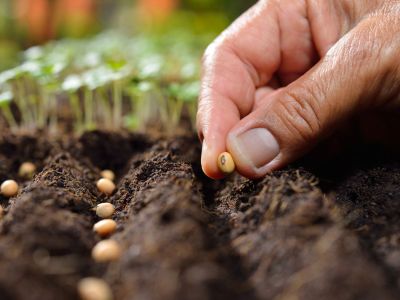Harvesting and planting seeds from your vegetable crops usually works, but you need to know which ones don’t need unique treatments for ultimate success.
Tips on Vegetable Seed Growing
Vegetable growers often save seed from their crops, especially when they have grown a desired species. Can you plant fresh seeds? Some plants will start just fine from newly harvested seed, while others need several months in a specialized environment to jump-start the embryo. If you are saving your seeds, you may wonder when you can plant seeds. It is inadvisable to save tomato seed, for instance, without cleaning the pulp away and drying the seed for a period of time. If you don’t let them dry, they won’t germinate but, instead, tend to just rot in the ground. However, if you are a cut-and-compost-on-site kind of gardener, you will find your composted tomatoes will readily produce volunteer plants the next season. What makes the difference? Time and maturity are part of the equation but so is the period of cold exposure. Planting freshly harvested seeds works best on perennial and cold-season vegetables, like cole crops.
When Can You Plant Seeds?
For most gardeners, there is a growing season that stops as soon as temperatures drop. Warm-season gardeners have the potential to grow crops year-round. Yet, planting freshly harvested seeds even in regions where temperatures remain mild is not a great idea. Seeds need to mature properly, the seed coating needs to dry and cure, and they need a rest period prior to planting. Waiting until seed has cured is the best method of vegetable seed growing. That way you don’t have an impermeable seed coat that will not allow water in and will grow foul and rotten before the embryo can germinate.
Harvesting and Planting Seeds
In almost all cases, it is best to prepare your seed prior to planting. Threshing and winnowing removes the extraneous plant matter and leaves just the seed. After that, you may also need to soak the seed to remove any wet vegetative matter. Once all the wet stuff is gone, spread the seed out and let it dry. This will make the seed stable for storage, but it also prepares the seed to accept moisture and split the husk, allowing the seedling to peep through. The drying process also helps the seed ripen. Once dried, it can be stored or planted if temperatures are cooperative.
